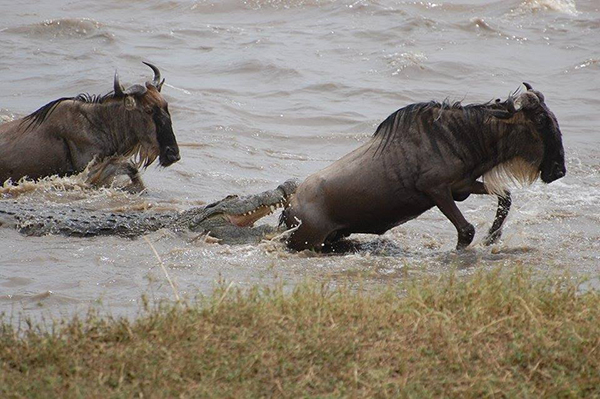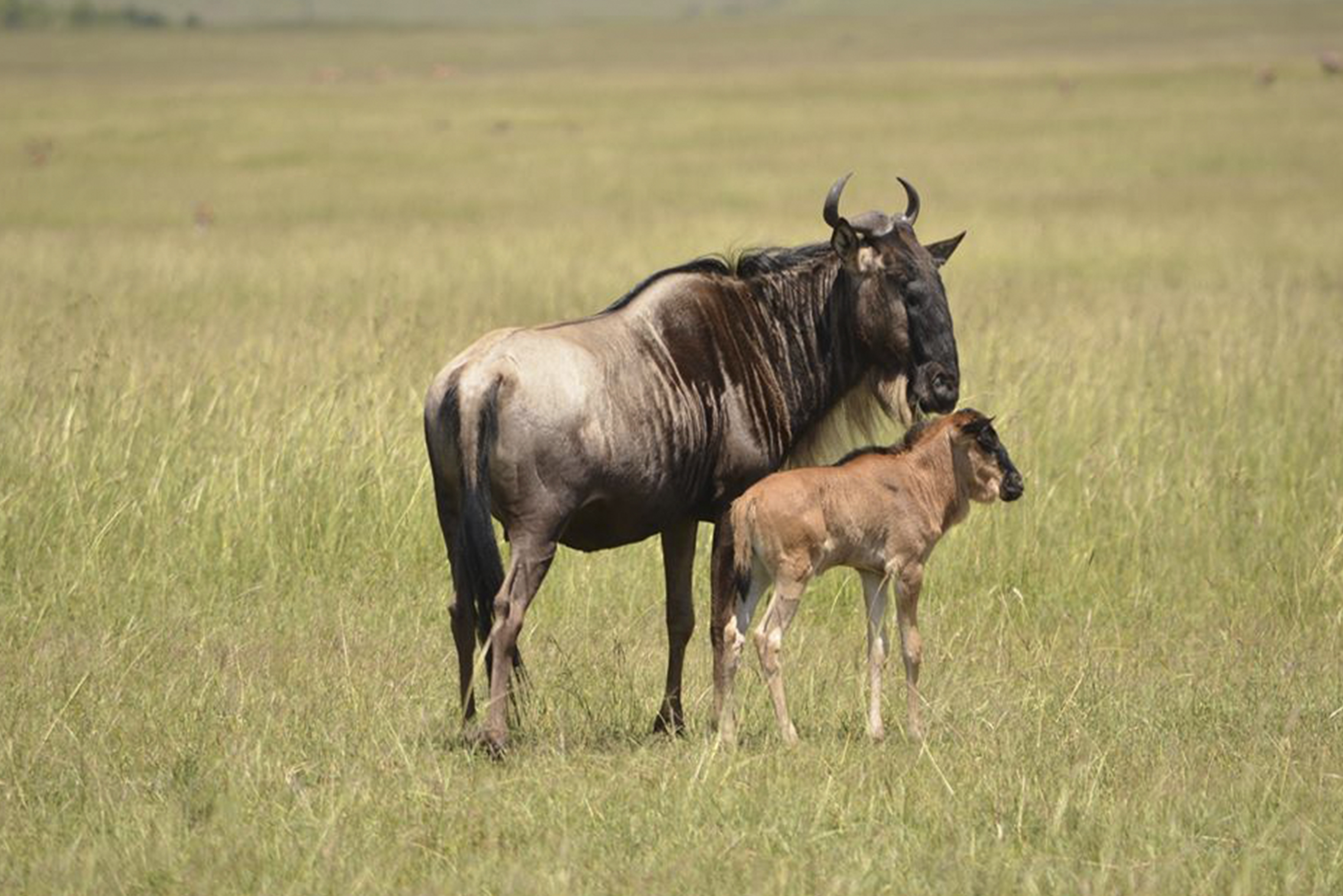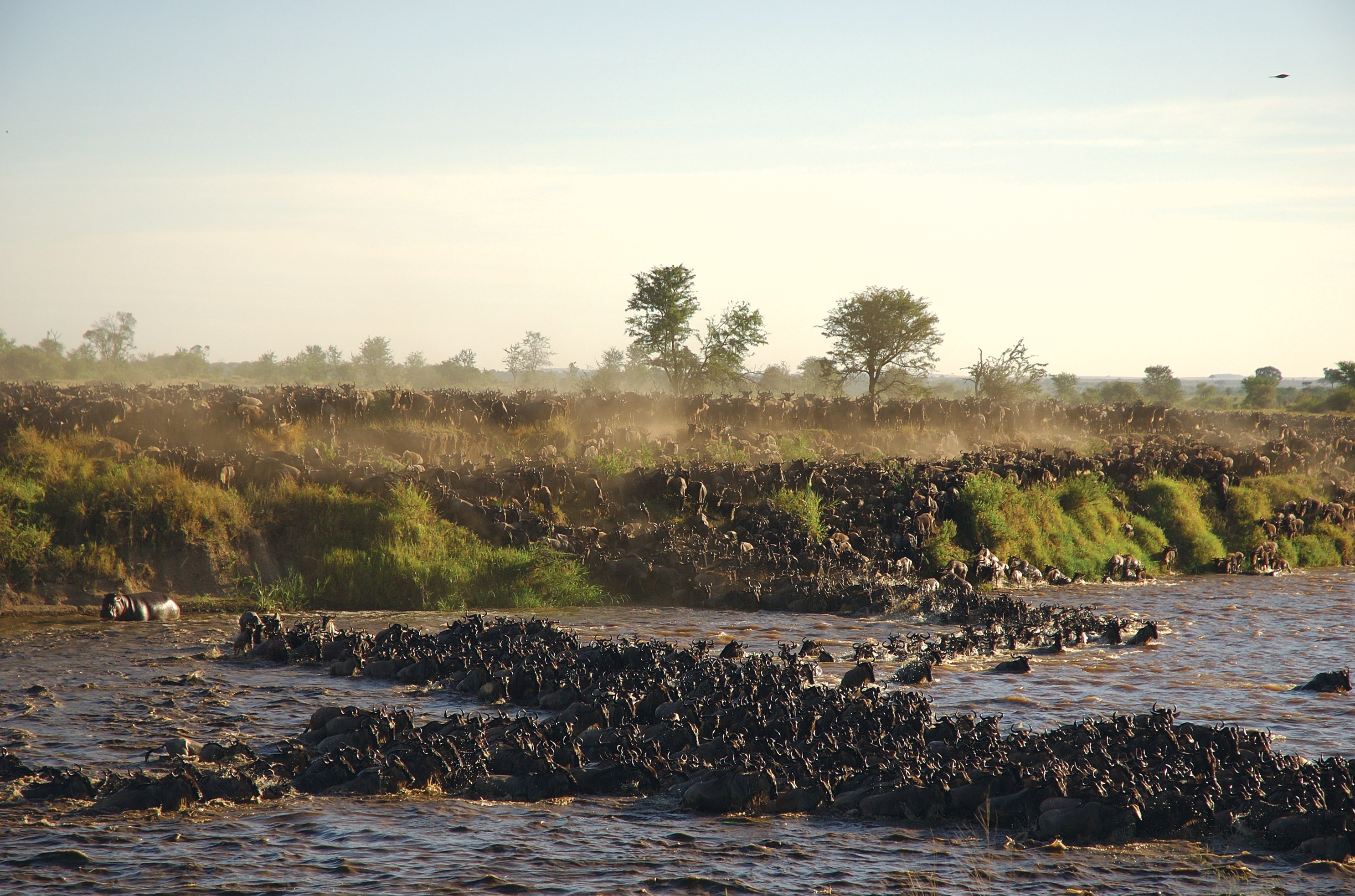Why Does the Great Migration in Africa Occur?
Every year, millions of hooves drum against Africa’s plains, raising dust and devouring kilometres as wildebeest, zebra and gazelles trek across the Serengeti and the Masai Mara. Called the Great Migration, their odyssey will lead them from drought to water and good grazing, though the way will be fraught with peril.
Crocodiles will claim some migrators as they traverse rivers, battling strong currents and the press of their herd’s wet, heaving bodies. Lions, leopards and hyenas will run down their share of prey on the plains. But ultimately, collaboration between the region’s two ecosystems will see the herds through danger and ensure their future. Indeed, these ecosystems support more large mammal species than any other place in the world. And they’ve maintained one of the world’s last remaining migrations of large mammals in a relatively unchanged state since the time of the hunter-gatherers.

The Ecosystems
Beginning in Tanzania’s Serengeti National Park and heading north into Kenya’s Maasai Mara Game Reserve, the Great Migration runs in a clockwise circle and covers around 2 900 kilometres. The never-ending journey goes from the southeast grassland region, to the northwest woodlands and back again.
The Southeast Grasslands
The Serengeti’s large herbivores must find the right quality and quantity of grass to support their species. Essentially, the ecosystem of the grasslands produces environmental circumstances that cater perfectly for their needs. More specifically, the ecoregion has the appropriate soil, climate and rainfall.
The grasslands lie just south of the border between Tanzania and Kenya. Over millions of years, the now dormant volcanic crater of Ngorongoro, the Kerimasi Volcano and Mount Lengai all deposited volcanic ash in these soils. When mineral-rich volcanic ash mixes with soils, the end product contains nutrients such as phosphates, nitrates, potassium, sodium and calcium, all of which are needed for the healthy growth of plants.
Also, the soil of the southeastern plains is a shallow, alkaline and very sandy loam. It overlies a calcareous hardpan that was created by the leaching of lime-rich soil. For the most part, the plains are treeless, given that deep-rooted plants and grasses can’t punch through the hardpan. But, the hardpan does allow minerals that would be unavailable in deeper soils to nourish short grasses. These grasses have adapted to the short growing season and heavy grazing of the region.
The Serengeti plains have the virtues of volcanic soils, meaning they’re extremely mineral-rich and fertile. Their short grasses contain much-needed nutrients such as calcium, nitrogen, zinc and sodium. Consequently, the plains are able to support large populations of grazers, giving them the vast quantity of nutrient-rich grass they need to survive.
Climatically, the eco-region is subtropical and averages maximum temperatures of around 26°C. An important feature of this climate is that it makes the region’s rainfall is strongly seasonal, with precipitation peaking during the long-rain period between March and May, and the short rains in November and December. By contrast, the dry season, which lasts from June to October, sees the plains become far too dry to sustain the herds.
The wet season allows the ecoregion’s incredibly fertile soil to produce the quantity of grass the grazers need. The dry season drives the grazers away and gives the plains a chance to rejuvenate ahead of their return.
Calving Season
The herds gather for calving season in the Serengeti and Ngorongoro Conservation areas of northern Tanzania during January and February. The birthing takes place over a three-week period and will see more than 400 000 calves born some eight months after mating season. The highest calving rate occurs in February, when an average of 8000 wildebeest are born each day.
From April to May, the Serengeti’s southernmost grass plains start to dry out, causing the herds to migrate west and north towards the woodland of the Western Corridor: their transitional grasslands.

Transitional Grasslands
Rainfall increases and evaporation decreases as the herds march further away from the Crater Highlands. This movement leads them to different soils and grassland. The soils become more mature and deeper. The vegetation shifts to medium-height grasses that grow on lime-rich soil, underlain by a softer pan that woody roots can penetrate in places. This type of grass receives fairly heavy grazing during the wet season.
Medium grassland then becomes long, 30cm-high grassland, with bamboo and bluestem grasses being the dominant types. The soil in this leg of the migration is black cotton and still volcanic in origin. The herds graze these grasses on the way to and from the woodland, choosing shorter, more agreeable species beneath the overstory of tall grass. The grasses here are high in magnesium, which is important for lactating females and the growing young.
The Rut
By June the rains stop and the drought of Tanzania’s dry season drives the herds further north. At this time, individual groups gather into larger herds and the migrating wildebeest enter their mating season, also called the rut. Upwards of 500 000 cows will mate over a four-week period.
The last type of soil migrators encounter before reaching the woodlands is the tall, red-oat grassland, which grows on brown calcareous soil. It has a lighter texture and is better drained than the black-cotton variety. The area has a lot of palatable understory grasses, meaning the herds graze moderately here during the dry season.
The Two Rivers
Come July, the herds must wade the Grumeti, the first of two rivers cutting across their path to the woodlands. The Grumeti River is deep in places, particularly if rains have been good. Many animals drown in these waters, having no more to give after weeks spent travelling on ruined limbs and under an unforgiving sun. Some will fall to serrated teeth as crocodiles gorge themselves. Those that survive the water will labour up steep, muddy banks to resume their relentless march, with the constant threat of plains predators dogging their steps.

August sees the herds into Kenya and brings the promise of good grazing on the lush plains of the Mara. But first they must flounder in the Mara River’s treacherous waters, their flanks once again exposed to ravenous crocodiles.
The herds will be far smaller after they cross, having lost hundreds of thousands to starvation, malnutrition, exhaustion, predation and drowning. But each precious species will have done enough to survive. The thriving plains of the Mara will sustain them while the south prepares for their return.
The Northwest Woodlands
The Mara’s woodlands flourish on the less mineral-rich soils of the ancient granite shield. The area has a higher rainfall and lower evaporation rate than the hotter, drier short-grass plains, producing a more robust undergrowth. Also, the soils experience rich weathering and weak leaching, which leads to the build up of soluble salts, carbonates and bases. The deeper soils support larger tussock grasses.
But as grass production increases with the rainfall, forage quality goes in the other direction. This factor drives the herds back to the mineral-rich grasslands during the wet season.
Back Again
The short rains arrive in November and December, drawing the herds south to the rejuvenated Serengeti plains. More than 90 percent of the cows are heavily pregnant as the tightly packed herds trek back through wooded country, scattering into widely spaced groups once they reach the open plains.
The cycle of life will continue as they graze on fresh, sweet grasses and drink at seasonal waterholes, taking in the continent’s goodness ahead of the birthing season. In a short while, new calves will replenish the herds ahead of the next Great Migration.
More The Great Migration Articles

BBC One: Serengeti – Transporting You To East Africa
06 July 2019By Britta Foulis – Content Marketing Manager If you’ve had a chance to...

East Africa’s Ultimate Bucket List Adventures
23 May 2019By Anwynn Louw – Digital Marketing Assistant East Africa is home to som...

Tanzania – One of the best countries in Africa to visit
28 October 2022An African safari is a definite must do, but very often guests ask, which is...

The Science Behind Africa’s Great Migration
14 June 2018Every year, millions of hooves drum against Africa’s plains, raising dust and...





